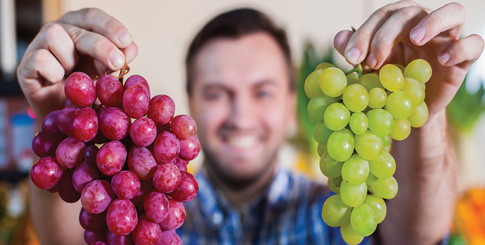While it is true total acreage declined slightly in 2016 and yields were up incrementally, this was probably due to newer varieties that are more productive per acre. Last year was marked by challenging conditions, including above-average rainfall in the winter, followed by three weeks of temperatures over 105 degrees, then unseasonal rain every month during the summer. It all wreaked havoc, causing mildew and rot. “Many growers in the San Joaquin Valley lost some production,” Spinelli confirms. “There was enough product overall, but it affected individual farms.”
“The 2017 harvest was one of the weirdest I’ve ever seen,” Zaninovich shares. “There was a late start and the sugars weren’t right.” He also cautions that rain during new growth can lead to fungal problems, and rain during harvest can damage the crop. “The jury is out for 2018—we’re hoping things will be normal.”
Looking Ahead
For California table grapes, the future is in new cultivars that are just now becoming established. Through patience, trial, and error, growers are moving forward with table grapes that are supposed to extend the domestic season and deliver consumer satisfaction. “There are about 30 to 50 experimental varieties in production, where there used to be five to seven,” points out Lane. “This will be a learning curve for the industry to find the best varieties for both production and consumption.”
Olsen believes the future may be more influenced by practices than varieties. “Practices such as packing in the field, fertilizing through irrigation rather than spraying, reducing emissions, and utilizing solar power will become bigger factors,” he says, adding that today’s consumers are much more environmentally aware and will “demand these techniques.”
Some growers, notes Radanovich, are experimenting with protected agriculture. “The benefits go beyond sheltering from extreme elements, serving as a method to conserve water and provide microclimates for optimum development.”
And despite the oft-discussed trend toward consolidation, even modest family-run growers can make their way forward by staying on top of innovations and carefully cultivating their niche. “We’re secure because of our service-oriented approach,” contends Olsen. “In the case of a perishable commodity, that goes a long way toward ensuring our survival.”
Last but not least, Monroe offers his thoughts: “The future resides with varieties that produce a heavier crop with bigger berry size and are less labor intensive. To keep farmers in the business, people will have to get used to spending more money for grapes.”
Image: Nomar_Soul/Shutterstock.com



